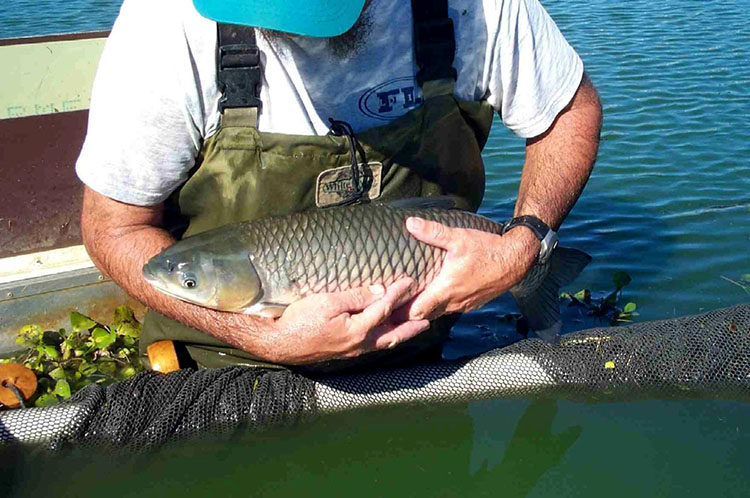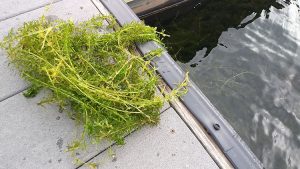 Oct. 8. By Erica Batten. A team from NC State University in Raleigh is beginning a lake survey this week to assess the hydrilla growth in Lake Norman. The data will then be reviewed by a team of local representatives along with Department of Environmental Quality personnel.
Oct. 8. By Erica Batten. A team from NC State University in Raleigh is beginning a lake survey this week to assess the hydrilla growth in Lake Norman. The data will then be reviewed by a team of local representatives along with Department of Environmental Quality personnel.
Dr. Phil Kirk, a grass carp expert with the U.S. Army Corps of Engineers who developed the 2004 Hydrilla Management Plan, will also be part of the team.
Residents in areas where the invasive plant’s growth is especially problematic have hired state-certified applicators to spray herbicides. State law prohibits non-certified individuals from applying pesticides to aquatic plants.
According to a report from Charlotte Water, hydrilla forms “nearly impenetrable mats” of growth near the lake’s surface.
With a growth rate of up to one inch per day, hydrilla can take over acres of a lake in one short season. 
Considered one of the most troublesome aquatic weeds in the world, hydrilla can affect fish populations, microscopic life and water chemistry. It can reproduce from fragments, so cutting actually encourages growth. And hydrilla requires less light than other aquatic plants, so it can continue to grow for longer periods each day and at depths of up to 30 feet.
It is a hazard to boaters, swimmers, and wildlife. Almost 30 years ago in Lake Moultrie, S.C., hydrilla blocked intakes and forced the shutdown of the St. Stephen hydroelectric facility.
Charlotte Water not only has to worry about clogging at its intakes on Lake Norman, it also has to consider what effects herbicides will have on the water supply.
Hydrilla was first found in Lake Norman in 2004, but the growth was quickly controlled when a population of sterile grass carp was stocked in the affected area.

ROBERT ELLIOTT
The grass carp, which cost $10 each when purchased in bulk, are the only effective method of controlling hydrilla growth, said Cornelius resident Bob Elliott, assistant director of the Lake Norman Marine Commission, a group of representatives from Catawba, Iredell, Lincoln and Mecklenburg Counties who address issues of public recreation and safety on the lake.
The grass carp are bred to have an extra set of chromosomes, rendering them sterile so that the population cannot grow out of control. In water above 68 degrees Fahrenheit, these herbivorous fish eat continuously and can consume several times their body weight each day in plant material. An initial stocking of 20-30 carp per affected area is needed to begin controlling hydrilla growth.
But carp must be added every year in order to replace ones who die off or are lost to fishing activity or spillage into other lakes in the river system. Elliott estimates that 8,000 grass carp would be needed annually to keep hydrilla under control.
The carp must be ordered from a specialty producer in Arkansas, and estimating the number of fish needed to control the problem can be tricky. In May, after hydrilla was again detected in Lake Norman, 10,200 carp were released into the lake through a partnership among the Lake Norman Marine Commission, Duke Energy, Charlotte Water and the N.C. Department of Environmental Quality in consultation with the N. C. Wildlife Resources Commission.
According to the N.C. State College of Agriculture and Life Sciences, carp are relatively low-cost over the long term. While initial stocking costs are about $100 per acre, fewer fish are needed in the following years, and costs average about $10 per acre annually over a period of ten years.
Aquatic herbicides range from $100-$300 per acre for each treatment, and are generally less effective at removing growth.
Charlotte Water’s report says that “complete eradication is often impossible but suppression is achievable.”
The U.S. Geological Survey reports that hydrilla first appeared in North Carolina in 1980 when it was found in Big Lake at Umstead Park in Raleigh. Now hydrilla is present in nearly half of the state’s 58 sub-basins, including the Upper Neuse, the Cape Fear and the Catawba Rivers.





